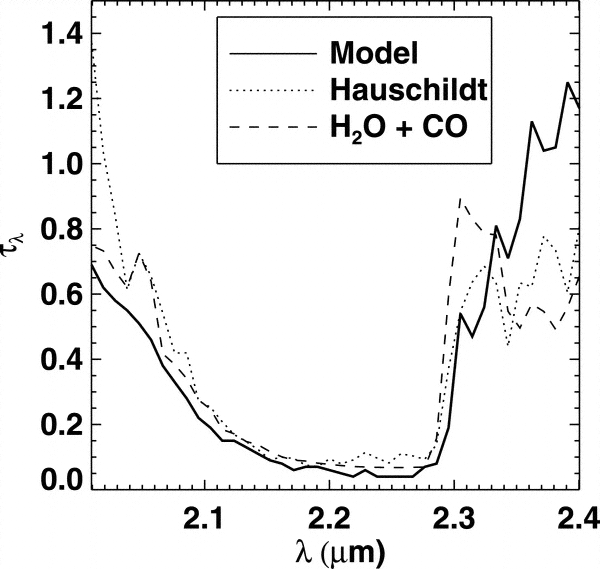Asymptotic gian branch (AGB) stars produce most of the mass loss in our
Galaxy, and produce copious amounts of dust and molecular gas that are
crucial ingredients of many astrophysical systems. We used the Keck
Interferometer with a grism providing low spectral dispersion to determine
the angular size of an AGB star as a function of wavelength, in order
to constrain the relative locations of different atmospheric layers
(Eisner et al. 2007).
Our data show stellar continuum emission as well as emission from
molecules--mostly water--arising from a region with twice the radius
of the stelllar continuum photosphere. These results constrain the
location of molecule formation around these stars, as well as the
physics behind the pulsations seen from such objects.

Atmospheric opacity inferred for the Mira star R Vir using spatially resolved spectroscopy with the Keck Interferometer.